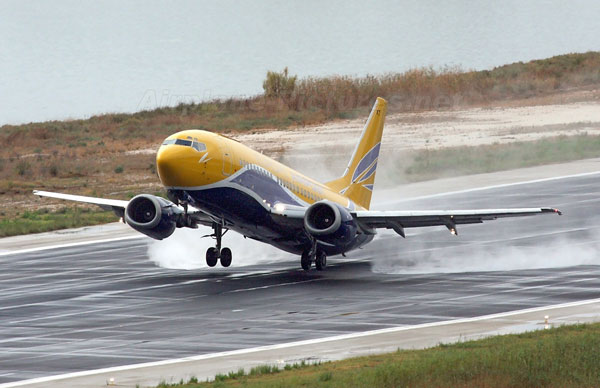Astronauts will fly to space by ordinary airports
The project is very expensive space. Just putting 1kg on orbit costs $ 7,000 to $ 20,000, the cost of launching missiles is 30% or more, so experts are looking for ways to reduce the cost of flying into space.
According to NASA's leading expert Stan Starr, the classic missile technology was too backward in many ways. He and his colleagues calculated that the highest cost to bring 1kg to space could not exceed $ 700. However, if you make a flight to the Moon and Mars, to ensure live activities for astronauts who need to carry thousands of tons of fuel, tools, clothes, medicine . and it is impossible to calculate the cost.
The missile is not enough capacity to transport such a large mass. In addition, so far the rate of missiles has been malfunctioning when launching is relatively large and there is no alternative.
For more than 10 years, NASA engineers have been steadfastly searching for new systems in principle to bring objects into orbit. They are implementing a project called eLaunch Hypersonic Launch Vehicles (EHLV) . The main component of this project is a 3km long ground-mounted electric launcher and manned, multi-use shuttle spacecraft, equipped with ultra-supersonic jet engines (hypersonic ). This system can reach speeds of up to 12,500km / hr and its mission is to bring modules that automatically transport to the stratosphere limit. If needing momentum platforms can be equipped with additional solid fuel accelerators.

It is expected that when reaching a height of 65 kilometers, the transport module will be separated from the shuttle, then thanks to the compact rocket engines that will connect to the waiting stations on the universe. Every day can organize up to dozens of flights. The cost of putting 1 kilogram of payload on the universe costs only 700 to 1,000 USD.
This problem can be solved with super-supersonic flying devices. Since 1982, Alan Bond has worked at the UK Atomic Energy Agency and has signed a license for a liquid rocket engine through Britain's HOTOL project. The new thing is that the engine can 'breathe' the atmosphere in the atmosphere and after passing a height limit, it will switch to using fuel that is oxygen and liquid hydrogen to carry.
Thus, it is possible to reduce the flight volume from 500 to 250 tons and still ensure a useful payload of 7 to 10 tons. In order to serve this option, it is necessary to build orbital jets, without the need for take-off devices and carrier missiles, which could save tens of billions of dollars.
The so-called 'RN545 Project' was once considered by the Ministry of Defense as a strategic project and the top secret was postponed and shelved. In 1989, Bond and his peers relied on Reaction Engines to continue their research and changed the name from 'project RB545' to SABRE (Synergic Air Breathing Engine). In early 2009, the European Space Agency ( EKA) has deducted $ 2 million for Bond's company to deploy, but the problem is whether to get further funding at later stages or not.
It is assumed that by 2020 there will be the first experimental results of the Skylon orbital project, a 275-ton unmanned jet aircraft specializing in passenger transport, equipped with two SABRE engines, each with muscle weighs 9.5 tons. Future traditional rockets will be much lighter, able to orbit 12-ton masses. The biggest advantage of Skylon is that it can take off from the airport's runway and in an emergency it is possible to land at any flat ground.
According to the head of the project is Alan Bond, the price of a first device is up to 1 billion USD. An aircraft of this type can complete no less than 250 flights. If the project becomes a reality, it can 'strike a strong blow' into the space market, dragging the price of a flight into orbit down to half, meaning it is no more than $ 200,000, but only 100000 USD. Of course, that number is still too high for many people but please remember, it is only the first step.
- How do astronauts sleep in space?
- The US spends $ 55 million on NASA to promote the creation of space for astronauts
- Why are astronauts forbidden to drink in outer space?
- China will let astronauts eat rice in space
- When astronauts fly into space, astronauts will be thinner
- America spends more on Russian rents to bring people to space
- Astronauts welcome the new year at the international space station
- Vivid images of space astronauts
- ISS first picked up 4 female astronauts at the same time
- China announced three astronauts to take on the mission of walking into space
- Astronauts are about to step outside the space station
- Astronaut walking in space
 Van Allen's belt and evidence that the Apollo 11 mission to the Moon was myth
Van Allen's belt and evidence that the Apollo 11 mission to the Moon was myth The levels of civilization in the universe (Kardashev scale)
The levels of civilization in the universe (Kardashev scale) Today Mars, the sun and the Earth are aligned
Today Mars, the sun and the Earth are aligned The Amazon owner announced a secret plan to build a space base for thousands of people
The Amazon owner announced a secret plan to build a space base for thousands of people